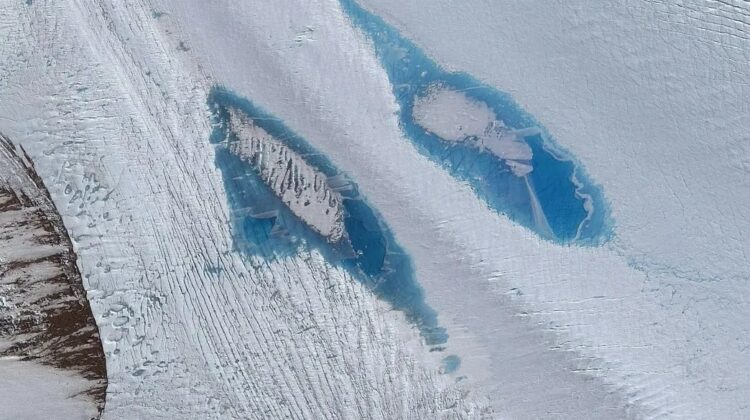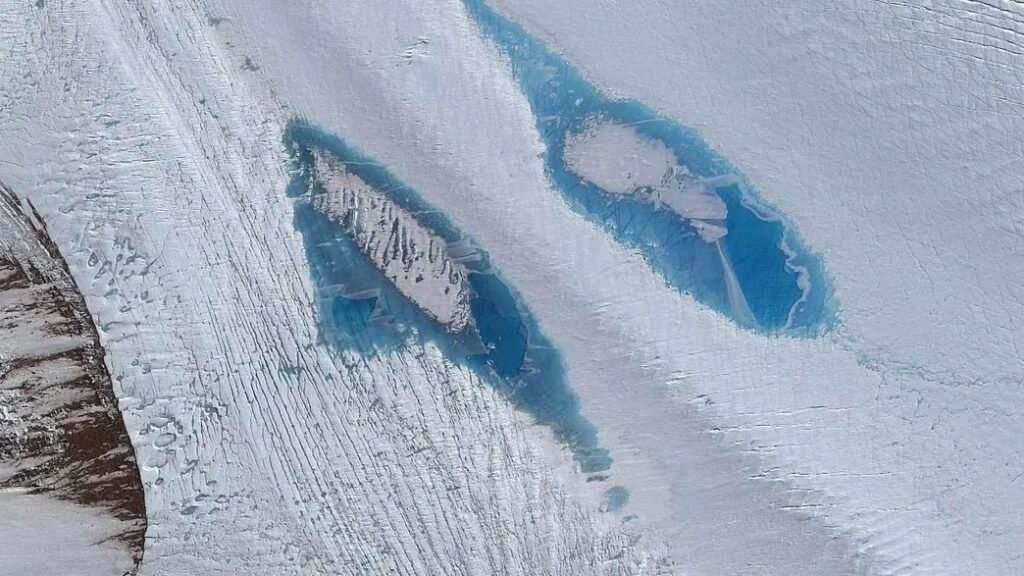
Aplethora of visually striking blue lakes have popped up on East Antarctica’s Langhovde Glacier. More precisely, 8,000 of these azure ponds have emerged between the year 2000 and 2013. This, unfortunately, is anything but good news.
As a new satellite-based study published in the journal Geophysical Research Letters points out, these lakes are appearing on what was considered to be a particularly cold segment of the world’s cryosphere, one that until now has largely resisted the inexorable march of man-made climate change.
“That’s the part of the continent where people have for quite a long time assumed that it’s relatively stable, there’s not a huge amount of change, it’s very, very cold, and so, it’s only very recently that the first supraglacial lakes, on top of the ice, were identified,” Stewart Jamieson, a glaciologist at Durham University and one of the study’s authors, told the Washington Post.
These lakes appeared every time the air temperature rose above freezing point. In the summer of 2012-2013, 37 days featured temperatures above this mark, and consequently, this is when most of these meltwater lakes appeared. Water absorbs more heat and retains it for long periods of time, so when they do appear, they act as effective heat sinks for the ice – and more heat sinks will result in more melting.

The Antarctic, particularly its eastern realm, has been unusually buffered against the accelerating pace of man-made climate change compared to its Arctic counterpart thanks to a series of natural flukes. These meltwater lakes may mean that East Antarctic’s reputation as an unusual bastion against global warming is about to come to an end.
In order to see what the future of East Antarctica may be like, all one needs to do is to look at the Arctic right now.
The level of ice cover – on both sea and land – in the Arctic is now dropping to such consistently low extents that a phenomenon known as Arctic Amplification is taking effect. Ice helps to reflect incoming solar radiation back into space. Less ice means more radiation makes it through to water, which absorbs it and stores it as heat for considerably long periods of time.
This melts the ice around it, creating more meltwater, and warming the Arctic even faster… and so on. This partly explains why the Arctic is warming at least twice as fast as almost anywhere else on the planet, and why the blue lakes emerging in the East Antarctic have been around in Greenland for far longer.

Could the lakes in East Antarctica mark the start of an “Antarctic Amplification” effect? Perhaps, but that’s not all.
These pools eventually erode deep into the ice, sometimes reaching the underlying bedrock and joining up with hidden networks of rivers. These vortex-like flows of briny, warm water lubricate the base of the ice sheets, causing them to flow faster. More often than not, they flow towards the sea. Ultimately, when these margins collapse away, it will leave the previously intact core unprotected from global warming.
A recent study mapping its thawing underbelly revealed that the margins of the Greenland Ice Sheet are becoming rapidly unstable, and its top-level blue briny lakes are only serving to exacerbate this. There’s no evidence yet to suggest that this is happening in the Antarctic, but if Greenland is anything to go by, there’s a good chance that it will – and there’s far more ice on the former waiting to slip into the sea than there is on the latter.

Leave a Reply